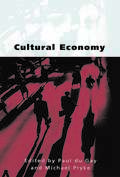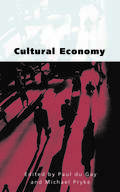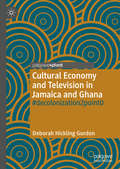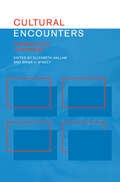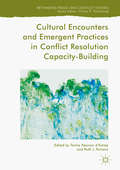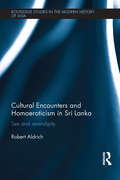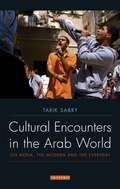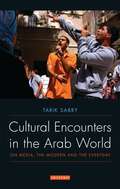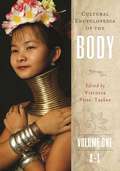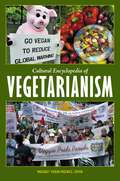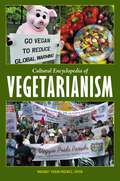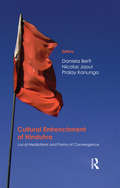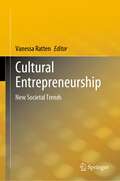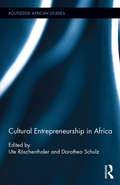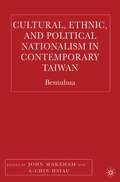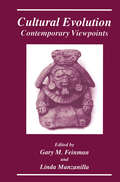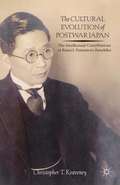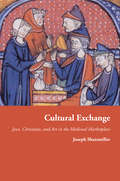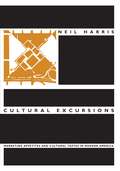- Table View
- List View
Cultural Economy: Cultural Analysis and Commercial Life
by Paul Du Gay Dr Michael PrykePhrases such as `corporate culture', `market culture' and the `knowledge economy', have now become familiar clarion calls in the world of work. They are calls that have echoed through organizations and markets. Clearly something is happening to the ways markets and organizations are being represented and intervened in and this signals a need to reassess their very constitution. In particular, the once clean divide that placed the economy, dealt with mainly by economists, on one side, and culture, addressed chiefly by those in anthropology, sociology and the other `cultural sciences', on the other, can no longer hold. This volume presents the work of an international group of academics from a range of disciplines including sociology, media and cultural studies, social anthropology and geography, all of whom are involved not only in thinking `culture' into the economy but thinking culture and economy together.
Cultural Economy: Cultural Analysis and Commercial Life
by Dr Michael Pryke Paul Du GayPhrases such as `corporate culture', `market culture' and the `knowledge economy', have now become familiar clarion calls in the world of work. They are calls that have echoed through organizations and markets. Clearly something is happening to the ways markets and organizations are being represented and intervened in and this signals a need to reassess their very constitution. In particular, the once clean divide that placed the economy, dealt with mainly by economists, on one side, and culture, addressed chiefly by those in anthropology, sociology and the other `cultural sciences', on the other, can no longer hold. This volume presents the work of an international group of academics from a range of disciplines including sociology, media and cultural studies, social anthropology and geography, all of whom are involved not only in thinking `culture' into the economy but thinking culture and economy together.
Cultural Economy and Television in Jamaica and Ghana: #decolonization2point0
by Deborah Hickling GordonThis book proposes contemporary decolonization as an approach to developing cultural economies in the Global South. It presents the account of the transformation of television in Jamaica and Ghana to audiovisual subsectors; from cultural institutions to cultural industries and then subsectors of emerging cultural economies as representative case studies. ‘Glocal’ changes are presented within five organizing phenomena: philosophical, ideological, and economic change, and their impact on governance and the operational transformation of the television sectors of Jamaica and Ghana. This book represents the first critical examination and comparison of cultural and creative industries (CCI) and economy concepts in the Caribbean and Africa. It is an original contribution to the development of strategies that influence processes, structures, and policies related to the cultural economy concept and those required to improve television industries. This process of describing culturally specific characteristics of CCI is designed to be applicable to the CCI of developing countries including those in Africa and the Caribbean, where interpretations and implementation suited for advanced industrial nations have been insufficiently questioned and challenged.
Cultural Encounters: Representing Otherness (Sussex Studies in Culture and Communication)
by Elizabeth Hallam Brian StreetCultural Encounters examines how 'otherness' has been constituted, communicated and transformed in cultural representation. Covering a diverse range of media including film, TV, advertisements, video, photographs, painting, novels, poetry, newspapers and material objects, the contributors, who include Ludmilla Jordanova and Ivan Karp, explore the cultural politics of Europe's encounters with Brazil, India, Israel, Australia and Africa, examining the ways in which visual and textual art forms operate in their treatment of cultural difference.
Cultural Encounters: Representing Otherness (Sussex Studies in Culture and Communication)
by Elizabeth Hallam Brian V. StreetCultural Encounters examines how 'otherness' has been constituted, communicated and transformed in cultural representation. Covering a diverse range of media including film, TV, advertisements, video, photographs, painting, novels, poetry, newspapers and material objects, the contributors, who include Ludmilla Jordanova and Ivan Karp, explore the cultural politics of Europe's encounters with Brazil, India, Israel, Australia and Africa, examining the ways in which visual and textual art forms operate in their treatment of cultural difference.
Cultural Encounters and Emergent Practices in Conflict Resolution Capacity-Building (Rethinking Peace and Conflict Studies)
by Tamra Pearson D'Estrée Ruth J. ParsonsWhile waves of scholarship have focused either on the value of presumed universal models or of traditional practices of conflict resolution, curiously missing has been the recognition and analysis of the actual intermingling and interacting of western and local cultural practices that have produced new and emergent practices in our global community. In this compilation of case studies, the authors describe partnerships forged between local practice expertise and bearers of “western/institutional” models to build innovative approaches to mediation and conflict resolution. Including stories of these experiences and the resulting hybrid models that emerged, the book explores central questions of cultural variation and integration, such as the perception of purpose and function of resolution processes, attitudes toward conflict, arenas and timeframes, third party roles, barriers to process use, as well as how to remain true to culture and context. It also examines partnership dynamics and lessons learned for modern cross-cultural collaboration.
Cultural Encounters and Emergent Practices in Conflict Resolution Capacity-Building (Rethinking Peace and Conflict Studies)
by Tamra Pearson D'Estrée Ruth J. ParsonsWhile waves of scholarship have focused either on the value of presumed universal models or of traditional practices of conflict resolution, curiously missing has been the recognition and analysis of the actual intermingling and interacting of western and local cultural practices that have produced new and emergent practices in our global community. In this compilation of case studies, the authors describe partnerships forged between local practice expertise and bearers of “western/institutional” models to build innovative approaches to mediation and conflict resolution. Including stories of these experiences and the resulting hybrid models that emerged, the book explores central questions of cultural variation and integration, such as the perception of purpose and function of resolution processes, attitudes toward conflict, arenas and timeframes, third party roles, barriers to process use, as well as how to remain true to culture and context. It also examines partnership dynamics and lessons learned for modern cross-cultural collaboration.
Cultural Encounters and Homoeroticism in Sri Lanka: Sex and Serendipity (Routledge Studies in the Modern History of Asia)
by Robert AldrichCeylon, or Sri Lanka, was long known to travellers for its luxuriant landscapes, colourful temples and friendly inhabitants – the island once named Serendip. This book explores the sojourns of gay visitors from the late 1800s to the modern day, providing a history of homosexuality, travel and cultural encounter on the island. The book offers profiles of major figures in Sri Lankan culture and of homosexual visitors, both famous and infamous, to the island. It discusses the experiences of sojourners including the Victorian social reformer Edward Carpenter and the German naturalist Ernst Haeckel, such British and American writers as Paul Bowles and Arthur C. Clarke, and the Australian painter Donald Friend. It also pays particular attention to Lionel Wendt, one of the most important modernist photographers outside Europe. For these figures, an erotic appreciation of young men whom they encountered mixed with interest in Sinhalese art, Buddhist and Hindu spirituality, and the flora and fauna of the island. Their experiences influenced modern writing, art and dance. Cultural influences moved in both directions, however, and Sri Lankans also found inspiration from abroad. The book argues that homosexuals played a major role in the transmission of cultural influences from Sri Lanka to the rest of the world, and from the wider world to this Indian Ocean island. Providing an original analysis of gay cultures in Sri Lanka from Victorian encounters to the present day, this book is the first study of Sri Lanka as a site of gay travel. An excellent study of trans-national cultural exchange, sexuality and the relationships between them, it will be of interest to academics in the field of Asian Studies, Colonial History and Gay and Queer Studies.
Cultural Encounters and Homoeroticism in Sri Lanka: Sex and Serendipity (Routledge Studies in the Modern History of Asia)
by Robert AldrichCeylon, or Sri Lanka, was long known to travellers for its luxuriant landscapes, colourful temples and friendly inhabitants – the island once named Serendip. This book explores the sojourns of gay visitors from the late 1800s to the modern day, providing a history of homosexuality, travel and cultural encounter on the island. The book offers profiles of major figures in Sri Lankan culture and of homosexual visitors, both famous and infamous, to the island. It discusses the experiences of sojourners including the Victorian social reformer Edward Carpenter and the German naturalist Ernst Haeckel, such British and American writers as Paul Bowles and Arthur C. Clarke, and the Australian painter Donald Friend. It also pays particular attention to Lionel Wendt, one of the most important modernist photographers outside Europe. For these figures, an erotic appreciation of young men whom they encountered mixed with interest in Sinhalese art, Buddhist and Hindu spirituality, and the flora and fauna of the island. Their experiences influenced modern writing, art and dance. Cultural influences moved in both directions, however, and Sri Lankans also found inspiration from abroad. The book argues that homosexuals played a major role in the transmission of cultural influences from Sri Lanka to the rest of the world, and from the wider world to this Indian Ocean island. Providing an original analysis of gay cultures in Sri Lanka from Victorian encounters to the present day, this book is the first study of Sri Lanka as a site of gay travel. An excellent study of trans-national cultural exchange, sexuality and the relationships between them, it will be of interest to academics in the field of Asian Studies, Colonial History and Gay and Queer Studies.
Cultural Encounters in the Arab World: On Media, the Modern and the Everyday
by Tarik SabryIn this groundbreaking book, Tarik Sabry is seeking out the terrain for best understanding the experience of being modern in transitional societies. He adopts a dynamic, ethnographically based approach to the meanings of 'modernness' in the Arab context and, within a relational framework, focuses on structures of thought, everydayness and self-referentiality to explore the process of building a bridge that rejoins the 'modern' in Arab thought with the 'modern' in Arab lived experience. In bringing together modernity as a philosophical category with the bridging spaces of Arab everyday life, Sabry is offering fresh methods of comprehending the question of what it means to be modern in the Arab world today.
Cultural Encounters in the Arab World: On Media, the Modern and the Everyday (Library of Modern Middle East Studies)
by Tarik SabryIn this groundbreaking book, Tarik Sabry is seeking out the terrain for best understanding the experience of being modern in transitional societies. He adopts a dynamic, ethnographically based approach to the meanings of 'modernness' in the Arab context and, within a relational framework, focuses on structures of thought, everydayness and self-referentiality to explore the process of building a bridge that rejoins the 'modern' in Arab thought with the 'modern' in Arab lived experience. In bringing together modernity as a philosophical category with the bridging spaces of Arab everyday life, Sabry is offering fresh methods of comprehending the question of what it means to be modern in the Arab world today."Tarik Sabry is the perfect 'modern Sinbad' navigating back and forth between different countries, cultures and languages, enriching them and himself. In the 1001 Nights there are two Sinbads: a sedentary one (al-bari) who is rather boring and not so successful. The other is a sea-navigator (al-bahri) who has an exciting life precisely because he masters the art of communicating with the Other. Tarik's book reflects this art." - Fatema Mernissi
Cultural Encyclopedia of the Body [2 volumes]: [2 volumes]
Pop culture and the media today are saturated with the focus on the aesthetics of the human body. Magazines and infotainment shows speculate whether this or that actress had breast implants or a nose job. Americans are not just focusing on celebrities but on themselves too and today have unprecedented opportunities to rework what nature gave them. One can now drop in to have cosmetic surgery at the local mall. Contemplating the superficial nature of it all grows tiresome, and pop culture vultures and students can get a better fix for their fascination with the body beautiful through the cultural insight provided in this amazing set. Cultural Encyclopedia of the Body is a treasure trove of essays that explore the human body alphabetically by part, detailing practices and beliefs from the past and present and from around the world that are sometimes mind-blowing and eye-popping.Body parts are examined through a multifaceted cultural lens. Readers will explore how the parts are understood, what they mean to disparate societies, how they are managed, treated, and transformed, and how they are depicted and represented. The entries draw from many disciplines that are concerned to some degree or another with human bodies, including anthropology archeology, sociology, religion, political history, philosophy, art history, literary studies, and medicine. The encyclopedia proffers information on a number of cultures, tribes, and customs from East and West. Ancient practices to the latest fad, which in fact might continue ancient practices, are illuminated. Other considerations that arise in the essays include comparisons among cultures, the changing perceptions of the body, and issues of race, gender, religion, community and belonging, ethnicity, power structures, human rights.
Cultural Encyclopedia of Vegetarianism
by Margaret Puskar-PasewiczIntended for students, general readers, vegetarians, and vegans, as well as those interested in animal welfare and liberation, this A–Z encyclopedia explores the historical and cultural significance of vegetarianism in the United States and beyond.Vegetarianism in the United States did not start in the 1960s—it has a much longer, complex history going back to the early 1800s. Cultural Encyclopedia of Vegetarianism examines that history through the lens of culture, focusing on what vegetarianism has had to say to and about Americans. This A–Z encyclopedia brings together the work of a number of scholars from diverse fields, including history, sociology, philosophy, religious studies, anthropology, nutrition, American studies, religious studies, women's and gender history, and the history of medicine. Approximately 100 essay entries cover cultural and historical aspects of vegetarianism, primarily but not exclusively in relation to the United States, shedding light on the practice's roots in ancient cultures and challenging popular myths and misconceptions related to both vegetarianism and veganism. With discussions on everything from activist movements to cookbooks, the encyclopedia offers a unique, wide-ranging exploration that will appeal to students, practitioners, and anyone else who wants to know more.
Cultural Encyclopedia of Vegetarianism
by Margaret Puskar-PasewiczIntended for students, general readers, vegetarians, and vegans, as well as those interested in animal welfare and liberation, this A–Z encyclopedia explores the historical and cultural significance of vegetarianism in the United States and beyond.Vegetarianism in the United States did not start in the 1960s—it has a much longer, complex history going back to the early 1800s. Cultural Encyclopedia of Vegetarianism examines that history through the lens of culture, focusing on what vegetarianism has had to say to and about Americans. This A–Z encyclopedia brings together the work of a number of scholars from diverse fields, including history, sociology, philosophy, religious studies, anthropology, nutrition, American studies, religious studies, women's and gender history, and the history of medicine. Approximately 100 essay entries cover cultural and historical aspects of vegetarianism, primarily but not exclusively in relation to the United States, shedding light on the practice's roots in ancient cultures and challenging popular myths and misconceptions related to both vegetarianism and veganism. With discussions on everything from activist movements to cookbooks, the encyclopedia offers a unique, wide-ranging exploration that will appeal to students, practitioners, and anyone else who wants to know more.
Cultural Entrenchment of Hindutva: Local Mediations and Forms of Convergence
by Daniela BertiThe book reflects on the discreet influence of Hindutva in situations/places outside or at the margins of its organisational and mobilisational arena, where people denying any commitment to the Sangh Parivar, incidentally, show affinities and parallelisms with its discourse and practice. This study looks at Hindutva’s entrenchment not so much as an orchestration from above but more as an outcome of a process that evolves in relation to specific social and cultural milieus.The contributors analyse Hindutva’s entrenchment, emphasising on the ethnography of the forms of mediation and/or convergence produced in certain contexts. The 11 case studies highlight three different dynamics of Hindutva’s cultural entrenchment. The first section gathers cases where RSS-affiliated organisations have set up specific cultural or artistic programmes at the regional level, involving the meditation of local people whose interest in these programmes does not necessarily mean that they endorse the Hindutva agenda completely. The next deals with convergence and refers to cases where the followers gather around a charismatic personality, whose precepts and practice may bring them towards a closer affinity with the Hindutva programme. The last section deals with the contexts of resistance, where social milieus engaged in opposing Hindutva may, in fact, paradoxically, and even inadvertently, imbibe some of its ideas and practices in order to contest its claims.
Cultural Entrenchment of Hindutva: Local Mediations and Forms of Convergence
by Daniela Berti Nicolas Jaoul Pralay KanungoThe book reflects on the discreet influence of Hindutva in situations/places outside or at the margins of its organisational and mobilisational arena, where people denying any commitment to the Sangh Parivar, incidentally, show affinities and parallelisms with its discourse and practice. This study looks at Hindutva’s entrenchment not so much as an orchestration from above but more as an outcome of a process that evolves in relation to specific social and cultural milieus.The contributors analyse Hindutva’s entrenchment, emphasising on the ethnography of the forms of mediation and/or convergence produced in certain contexts. The 11 case studies highlight three different dynamics of Hindutva’s cultural entrenchment. The first section gathers cases where RSS-affiliated organisations have set up specific cultural or artistic programmes at the regional level, involving the meditation of local people whose interest in these programmes does not necessarily mean that they endorse the Hindutva agenda completely. The next deals with convergence and refers to cases where the followers gather around a charismatic personality, whose precepts and practice may bring them towards a closer affinity with the Hindutva programme. The last section deals with the contexts of resistance, where social milieus engaged in opposing Hindutva may, in fact, paradoxically, and even inadvertently, imbibe some of its ideas and practices in order to contest its claims.
Cultural Entrepreneurship: New Societal Trends
by Vanessa RattenCultural entrepreneurship uses culture as a way to understand innovative business ventures. Culture in this edited book involves the beliefs and values associated with certain forms of behaviour. This means the way individuals are involved in business ventures is based on their cultural ideas. This edited book focuses on how cultural entrepreneurship is an important way to understand how cultural products and services such as art, food, music and literature influence the development of business ventures. Thereby highlighting the interesting and unique way cultural ideas are embedded in entrepreneurial activities.
Cultural Entrepreneurship in Africa (Routledge African Studies #20)
by Ute Röschenthaler Dorothea SchulzThis book seeks to widen perspectives on entrepreneurship by drawing attention to the diverse and partly new forms of entrepreneurial practice in Africa since the 1990s. Contrary to widespread assertions, figures of success have been regularly observed in Africa since pre-colonial times. The contributions account for these historical continuities in entrepreneurship, and identify the specifically new political and economic context within which individuals currently probe and invent novel forms of enterprise. Based on ethnographically contextualized life stories and case studies of female and male entrepreneurs, the volume offers a vivid and multi-perspectival account of their strategies, visions and ventures in domains as varied as religious proselytism, politics, tourism, media, music, prostitution, funeral organization, and education. African cultural entrepreneurs have a significant economic impact, attract the attention of large groups of people, serve as role models for many youths, and contribute to the formation of new popular cultures.
Cultural Entrepreneurship in Africa (Routledge African Studies)
by Ute Röschenthaler Dorothea SchulzThis book seeks to widen perspectives on entrepreneurship by drawing attention to the diverse and partly new forms of entrepreneurial practice in Africa since the 1990s. Contrary to widespread assertions, figures of success have been regularly observed in Africa since pre-colonial times. The contributions account for these historical continuities in entrepreneurship, and identify the specifically new political and economic context within which individuals currently probe and invent novel forms of enterprise. Based on ethnographically contextualized life stories and case studies of female and male entrepreneurs, the volume offers a vivid and multi-perspectival account of their strategies, visions and ventures in domains as varied as religious proselytism, politics, tourism, media, music, prostitution, funeral organization, and education. African cultural entrepreneurs have a significant economic impact, attract the attention of large groups of people, serve as role models for many youths, and contribute to the formation of new popular cultures.
Cultural Essentialism in Intercultural Relations (Frontiers of Globalization)
by Fred Dervin Regis MachartThe concept of culture has long been criticized, with many scholars reformulating it or discarding it entirely. The field of intercultural communication and relations, however, still relies on culture to examine interculturality and this volume provides a comprehensive examination of the problems that the concept poses today.
Cultural, Ethnic, and Political Nationalism in Contemporary Taiwan: Bentuhua
by J. Makeham A. HsiauThis volume analyzes what is arguably the single most important aspect of cultural and political change in Taiwan over the past quarter-century: the trend toward 'indigenization' (bentuhua). Focusing on the indigenization of politics and culture and its close connection with the identity politics of ethnicity and nationalism, this volume is an attempt to map prominent contours of the indigenization paradigm as it has unfolded in Taiwan. The opening chapters concern the origin and nature of the trend toward indigenization with its roots in the unique historical trajectory of politics and culture in Taiwan. Subsequent chapters deal with responses and reactions to indigenization in a variety of social, cultural and intellectual domains.
Cultural Evolution: Contemporary Viewpoints
by Gary M. FeinmanDrawing on Kent Flannery's forty years of cross-cultural research in the area, the contributors to this collection reflect the current diversity of contemporary approaches to the study of cultural evolutionary processes. Collectively the volume expresses the richness of the issues being investigated by comparative theorists interested in long-term change, as well as the wide variety of data, approaches, and ideas that researchers are employing to examine these questions.
The Cultural Evolution of Postwar Japan: The Intellectual Contributions of Kaiz?’s Yamamoto Sanehiko
by Christopher KeaveneyYamamoto Sanehiko's (1885-1952) achievements as a publisher, writer, and politician in the interwar period served as both a catalyst and a template for developments after the wars. While exploring the accomplishments the compelling figure, this study sheds new light on the social, cultural, and political changes that occurred in postwar Japan.
Cultural Exchange: Jews, Christians, and Art in the Medieval Marketplace (PDF)
by Joseph ShatzmillerDemonstrating that similarities between Jewish and Christian art in the Middle Ages were more than coincidental, Cultural Exchange meticulously combines a wide range of sources to show how Jews and Christians exchanged artistic and material culture. Joseph Shatzmiller focuses on communities in northern Europe, Iberia, and other Mediterranean societies where Jews and Christians coexisted for centuries, and he synthesizes the most current research to describe the daily encounters that enabled both societies to appreciate common artistic values. Detailing the transmission of cultural sensibilities in the medieval money market and the world of Jewish money lenders, this book examines objects pawned by peasants and humble citizens, sacred relics exchanged by the clergy as security for loans, and aesthetic goods given up by the Christian well-to-do who required financial assistance. The work also explores frescoes and decorations likely painted by non-Jews in medieval and early modern Jewish homes located in Germanic lands, and the ways in which Jews hired Christian artists and craftsmen to decorate Hebrew prayer books and create liturgical objects. Conversely, Christians frequently hired Jewish craftsmen to produce liturgical objects used in Christian churches. With rich archival documentation, Cultural Exchange sheds light on the social and economic history of the creation of Jewish and Christian art, and expands the general understanding of cultural exchange in brand-new ways.
Cultural Excursions: Marketing Appetites and Cultural Tastes in Modern America
by Neil HarrisNeil Harris's scholarship of the past twenty-five years has helped to open up the study of American cultural history. This long-awaited collection gathers some of his rich and varied writings. Harris takes us from John Philip Sousa to Superman, with stops along the way to explore art museums and world fairs, shopping malls and hotel lobbies, urban design and utopian novels, among other artifacts of American cultures. The essays fall into three general sections: the first treats the history of cultural institutions, highlighting the role of museums; the second section focuses on some literary, artistic, and entrepreneurial responses to the new mass culture; and the final group of essays explores the social history of art and architecture. Throughout Harris's diverse writings certain themes recur—the redefining of boundaries between high art and popular culture, the relationship between public taste and technological change, and the very notion of what constitutes a shared social experience. Harris's pioneering work has broadened the field of cultural history and encouraged whole new areas of inquiry. Cultural Excursions will be useful for those in American and culture studies, as well as for the general reader trying to make sense of the culture in which we live.
